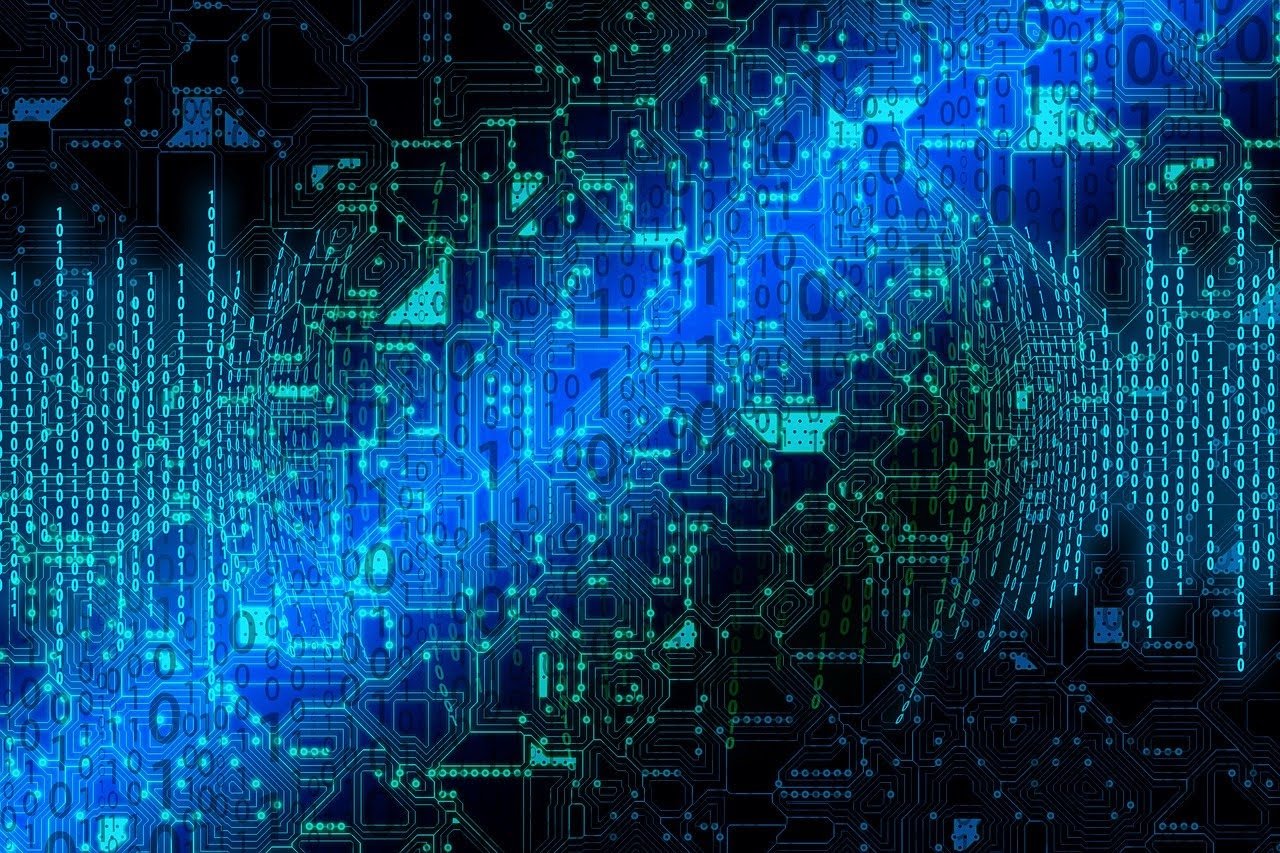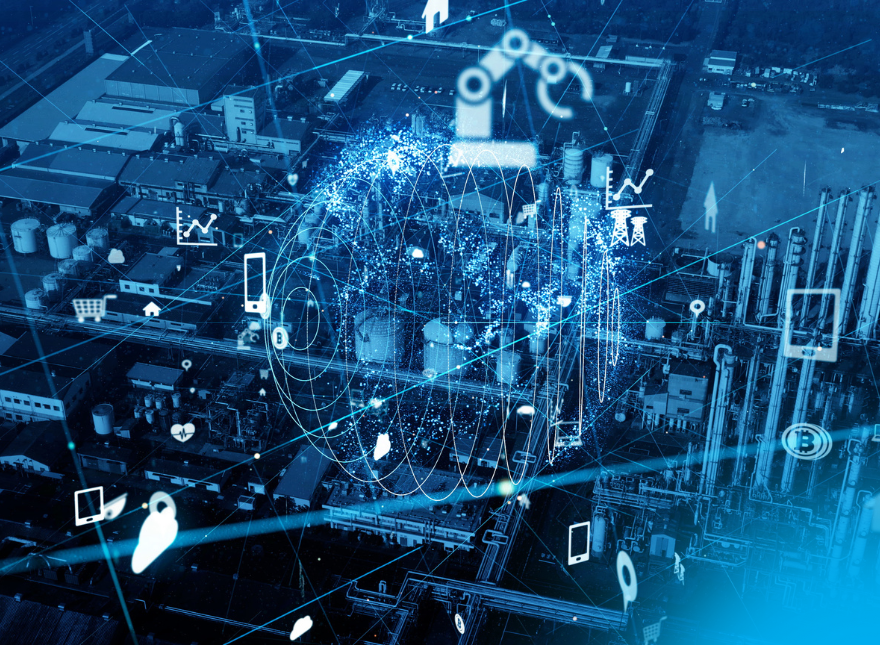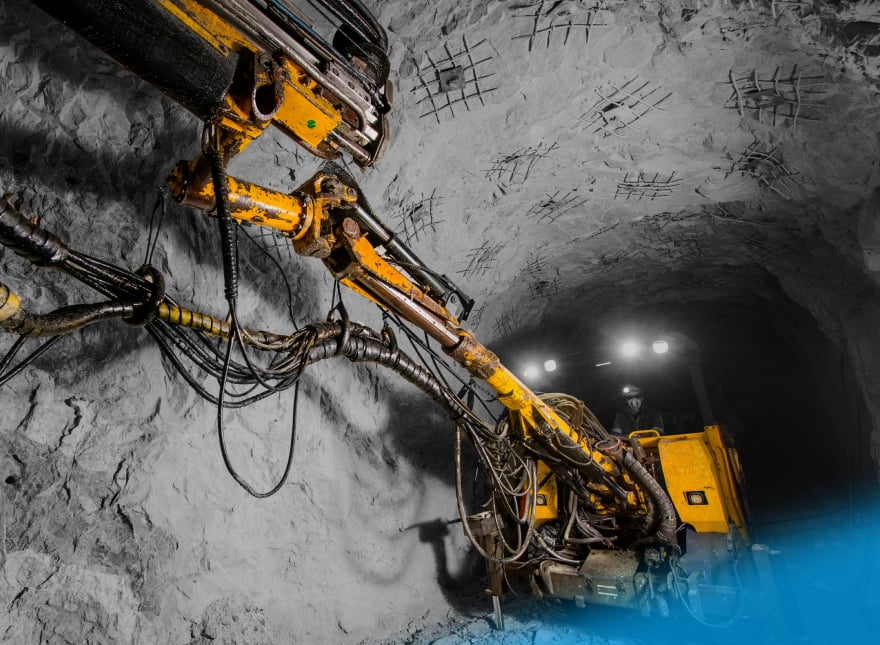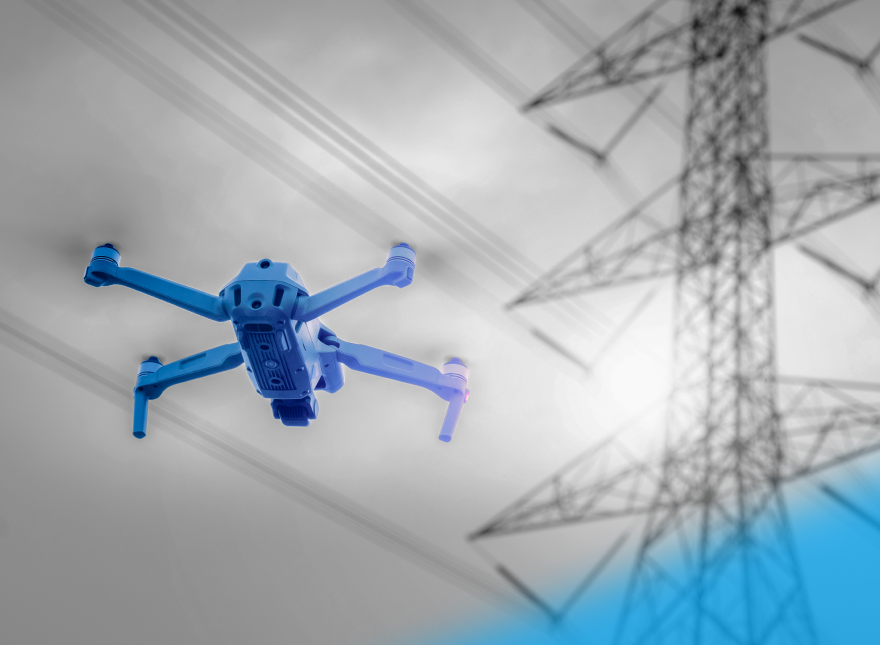Check out our latest blog article: From component to enterprise – modular robotics done right.
Drones are Taking Industrial Inspections and Remote Equipment Maintenance to the Next Level
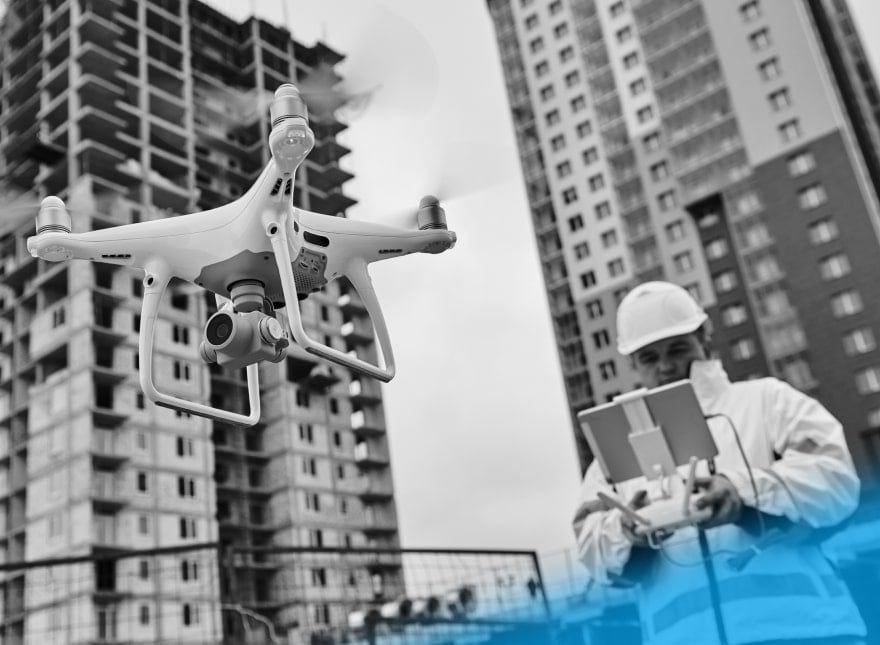
By 2025, the global unmanned aerial vehicle (UAV) market is expected to top $63 billion (up from $4.4 billion in 2018). Although commercial drones comprise only 6% of the US two-million unit drone fleet, it is enterprises that drive 60% of the drone industry’s revenue.
In this article, we’ll take a closer look at drone-based industrial inspection solutions, which make up 28% of commercial UAV use cases. You will learn how oil and gas, construction, and utility companies leverage drones to automate routine equipment and infrastructure checkups.
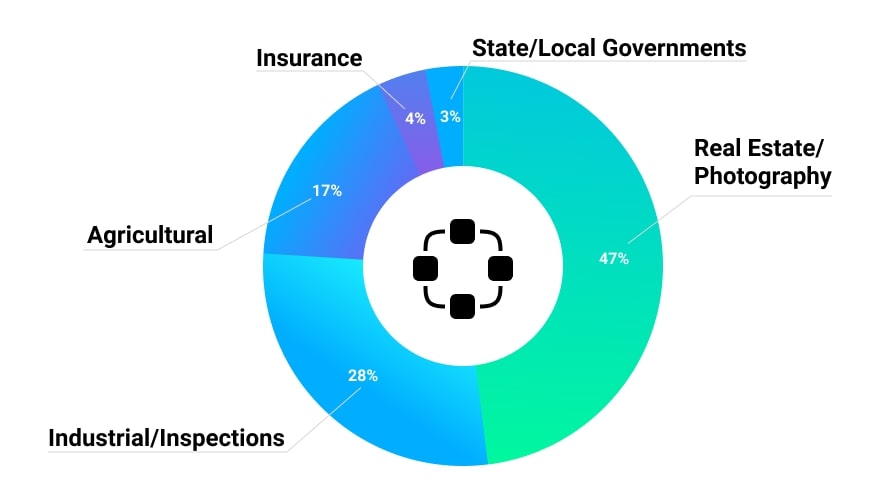
Zooming in on Industrial Inspection Drones
The use of UAVs in industrial settings primarily revolves around collecting sensor data and high-quality images of equipment and installations that require frequent monitoring and planned maintenance. These include transmission lines, power plants, oil rigs, and wind turbines. To make sense of heterogeneous inspection data, companies turn to Machine Learning models deployed in the cloud. This way, they can pinpoint gas leaks, evaluate equipment wear and tear, monitor coastal erosion, and track project progress on large construction sites without exposing employees to environmental, physical, and chemical hazards.
Drone-based Industrial Inspection Systems: Key Requirements
To perform inspections and facilitate remote maintenance of critical infrastructures, drones should be able to:
- Capture survey-grade images and sensor data
- Leverage sensor and video data for object tracking, self-navigation, and collision avoidance
A combination of hardware, software, and connectivity technologies allows drones to perform these tasks:
- Hardware. Besides 4K cameras, which record high-definition videos even when drones are flying at high speed and altitudes, UAVs incorporate accelerometers, gyroscopes, GPS receivers, and inertial measurement unit (IMU) sensors. Industry-specific UAV models also make use of LiDAR, thermal, and infrared sensors to detect objects and maneuver around obstacles.
- Software. The software components of drone inspection solutions feature embedded systems, mobile apps, cloud infrastructure, dashboards, and web or desktop applications. They enable drones to acquire video and sensor data and relay it to the cloud and ground stations. A number of technologies transform digital images into 2D and 3D maps to help human technicians identify objects and patterтs in live and historical data. Some of the most popular include photogrammetry, image stitching, simultaneous localization and mapping (SLAM), and Machine Learning in its broad sense. Additionally, companies integrate drone management platforms with enterprise applications: warehouse, workflow, resource planning, and digital asset management systems among others.
- Network infrastructure. Drone inspection solutions can be used outdoors and in GPS-denied indoor locations, such as power plants or warehouse facilities. To exchange data with the remote ground control system and cloud servers, UAVs rely on wireless networking technologies, including Bluetooth, Wi-Fi, and 5G as of late.

When choosing a technology stack supporting the operation of drone-based systems, industrial companies should pay attention to several factors, including:
- Possible battery drain. A commercial drone should have a flight time of at least 15 minutes. Excess weight, extreme weather conditions, and heavy computing performed on the device (high-end UAV models can detect objects without communicating with the cloud) prevent drones from staying in flight longer.
- Aerial data accuracy. To create highly accurate drone maps and detect malfunctioning equipment components with greater precision, industrial drones should make use of quality sensors, robust data analytics solutions, and advanced computer vision (CV) techniques and algorithms. This might increase the cost of developing and implementing drone inspection systems at scale.
Additional challenges may be associated with meeting the UAV industry regulations for flying drones outdoors. These include the Federal Aviation Administration (FAA) guidelines in the USA and the European Union Aviation Safety (EASA) regulations, which apply universally across Europe.
What are the Benefits of Using Drone Inspection Solutions?
Compared to helicopter surveying and ground-based inspections, drones help companies perform asset inspections faster and reduce the corresponding costs by up to 30%. Speaking of remote equipment maintenance, UAVs could yield a 10-40% reduction in field service costs by eliminating the need for in-person technician visits and guiding maintenance teams on where to go and what tools to bring before proceeding with repairs.
Drone Inspection Solutions: Applications by Industry
- Construction. Large construction projects run 80% over budget and 20% longer than originally estimated. To up their game, engineering and construction (E&C) companies harness drones to streamline construction site inspections. For example, US laws require property developers to survey their sites regularly to ensure employee safety. Depending on the size of the construction or demolition area, the process can take anywhere from 10 hours to a few days. Drones help technicians do the same amount of work in just 15 minutes. E&C can also use drone images to create 3D models of buildings and urban infrastructure and feed them to building information management (BIM) systems.
- Energy and utilities: There are 600 thousand high-voltage transmission and 5.5 million distribution lines in the USA. Every year, utility companies spend $6-8 billion on inspecting and maintaining the country’s electrical grids using helicopters and ground crews. With drones, these expenses can be reduced by up to 50%. Besides cost reduction, UAVs offer an opportunity to inspect substations and power plants without shutting them down, which minimizes the risk of power outages.
- Green energy. Renewable energy equipment comprises one-third of the global power capacity. In the USA, there are six thousand utility-scale solar facilities deployed nationwide. Germany, the world’s fourth-largest producer of solar energy, has an installed capacity of 49 gigawatts (GW). Solar power plants require frequent inspections and maintenance. Recent studies show that drones can be 95% more efficient in identifying defective equipment parts than human workers. Another example comes from the wind power industry, where drone-assisted maintenance checks eliminate much of the climbing associated with wind turbine blade inspections and reduce turbine downtime by 75%.
- Oil and gas. With 2.4 million miles of underground pipelines across the USA, oil and gas companies have to perform frequent inspections and maintenance to keep the massive infrastructure up and running. Routine inspections carry an additional cost and expose field workers to environmental and safety hazards. Previous attempts to increase the distance between human technicians and equipment, such as monitoring the pipes from a helicopter, failed to produce quality images and cost up to $1,250 per rotor hour. Due to the ability to generate HD images, collect accurate geospatial data, and keep field workers away from hazardous equipment, drones are finding a home in the oil and gas sector. Numerous companies, including Shell and BP, fly drones over oil platforms, tanks, and boilers to check for corrosion, cracks, leaks, and toxic gases. According to North American Oil & Gas Pipelines, the early UAV adopters have achieved up to a 50% reduction in inspection costs while improving employee safety.
Things to Keep in Mind When Launching a Drone Inspection Solution
Whether you decide to start an in-house drone inspection program or partner with a 3rd-party provider, it is essential to identify your company’s pain points and goals. In terms of mass adoption and usage, UAV technology is still in its infancy, so you may need to hire a skilled Business Analysis team to align your company stakeholders. It is also necessary to assess the cost of launching and maintaining a drone fleet and the underlying data analytics infrastructure.
Next, you must ensure that your drone pilots have FAA/EASA certificates.
Last but not least, drones are part of the Internet of Things, and any IoT device is a magnet for cybercriminals. There is strong evidence that Chinese-made UAVs are sending sensitive data to manufacturers and (possibly) to the Chinese government, which could lead to cyberattacks targeting power grids, nuclear power plants, and high-end equipment.
Take-home Message
2020 is a turning point for the UAV industry. Amid the global lockdown, more businesses, healthcare organizations, and governmental entities are beginning to investigate technologies for industrial inspections, remote equipment and critical infrastructure maintenance, and public safety. And here’s where drones come in useful.
There are several factors behind the rise of commercial drones. These include:
- The diminishing cost of hardware components
- The growth of IoT platforms, which allow companies to set up data storage and analysis infrastructure in the cloud
- The slow but steady expansion of 5G networks across the USA and Europe
- The development of technical requirements and regulations that would help safely integrate UAVs into the international airspace
And although we’re still a few years away from self-sufficient, AI-powered drones that will replace inspection crews, chances are that drones will soon be working alongside human specialists to speed up further digitalization of the industrial sector.
More articles on the topic


